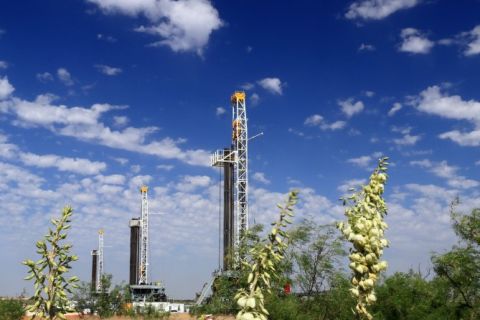
The pink hard hart and high heels that Irene Wischer donned as CEO of Panhandle Resources back in the 1970s would still stand out on a rig today.
But you need not look further than Hart Energy's 2024 list of Influential Women in Energy to find role models of women succeeding in oil and gas business boardrooms, C-suites, leases and laboratories.
Indeed, women filled slightly more than half of the energy jobs added in 2022—50.3% for a total of 149,732 positions, according to the U.S. Energy and Employment 2023 report. That’s a 7.8% increase from the previous year.
And women led job growth in the electric power generation (EPG) sector, accounting for 65% of the gains in 2022. The clean EPG workforce grew by 3.6%, which was 16% faster than overall domestic economic growth.
Nevertheless, the hard work isn’t done. A woman executive with whom I occasionally split a bottle of wine told me last week that she’s looking for a new job. Despite a promotion three years ago to lead personnel at an offshore drilling firm, she still brings home almost $30,000 less each year than the man she replaced when he was fired.
She’s now doing what any smart professional would do in that spot: she’s looking for opportunities elsewhere—and that includes outside of oil and gas. When she inevitably lands a job that pays her what she’s worth, it’ll be a loss for that company and the industry.
This isn’t about giving anyone an advantage based on a warm and fuzzy social and/or government diversity mandate; it’s about doing what’s right from a business—and yes, moral— perspective.
And other industries with a better perceived culture of diversity are taking note. Oil and gas skills are in demand by those outside of the sector. Some 40% of the 87% of workers surveyed who said they would consider switching jobs said they would be open to leaving the energy space, according to the 2024 Global Energy Talent Index Report (GETI). Of the workers who were headhunted in 2023, 12% said they were approached more than 16 times; 9% of engineers within this category said they were approached 21 times. Up to half of the inquiries came from outside the industry, the report said.
In 2022, the GETI report indicated 70% of all oil and gas workers were considering a departure from the industry within three years.
Oil and gas is in the risk management business, and taking risks is in the DNA of energy leaders. To accelerate much-needed innovation, the industry must “widen its talent pipeline and take risks on employees with new skills and perspective,” according to Bain & Co.’s “Creating the Workforce for an Oil and Gas Industry in Transition” report.
“Maximizing the potential of this workforce will be an all-hands effort, requiring new talent pipelines from a more demographically diverse pool of prospects,” the report said.
Some companies within oil and gas have embraced this approach in recent years, Bain said. In 2021, 70% of large oil and gas companies surveyed fully disclosed employment diversity, equity and inclusion (DEI) data in the U.S.—a dramatic increase from 4% in 2019. Slightly more than half—55%—of the overall S&P 500 was reporting the data.
But while those companies are reporting the numbers, few are doing much else, Bain reported. About 60% of the largest global oil and gas firms don’t report gender pay equity.
It’s smart to chase the best and the brightest. The oil and gas industry may be at risk of losing the race if women remain sidelined.
To see the full list of Hart Energy's 2024 Influential Women in Energy, click here.
Recommended Reading
E&P Highlights: Feb. 12, 2024
2024-02-12 - Here’s a roundup of the latest E&P headlines, including more hydrocarbons found offshore Namibia near the Venus discovery and a host of new contract awards.
ChampionX to Acquire RMSpumptools, Expanding International Reach
2024-03-25 - ChampionX said it expects the deal to extend its reach in international markets including the Middle East, Latin America and other global offshore developments.
Triangle Energy, JV Set to Drill in North Perth Basin
2024-04-18 - The Booth-1 prospect is planned to be the first well in the joint venture’s —Triangle Energy, Strike Energy and New Zealand Oil and Gas — upcoming drilling campaign.
OEP Completes Acquisition of TechnipFMC’s Measurement Solutions Business
2024-03-27 - One Equity Partners said TechnipFMC’s measurement solutions business will be rebranded as Guidant and specialize in measurement technology, automation solutions and global systems.
Permian Activity in ‘Low-to-no-growth’ Mode for First Half
2024-02-22 - After multiple M&A moves in 2023 and continued E&P adherence to capital discipline, Permian Basin service company ProPetro sees the play holding steady.





